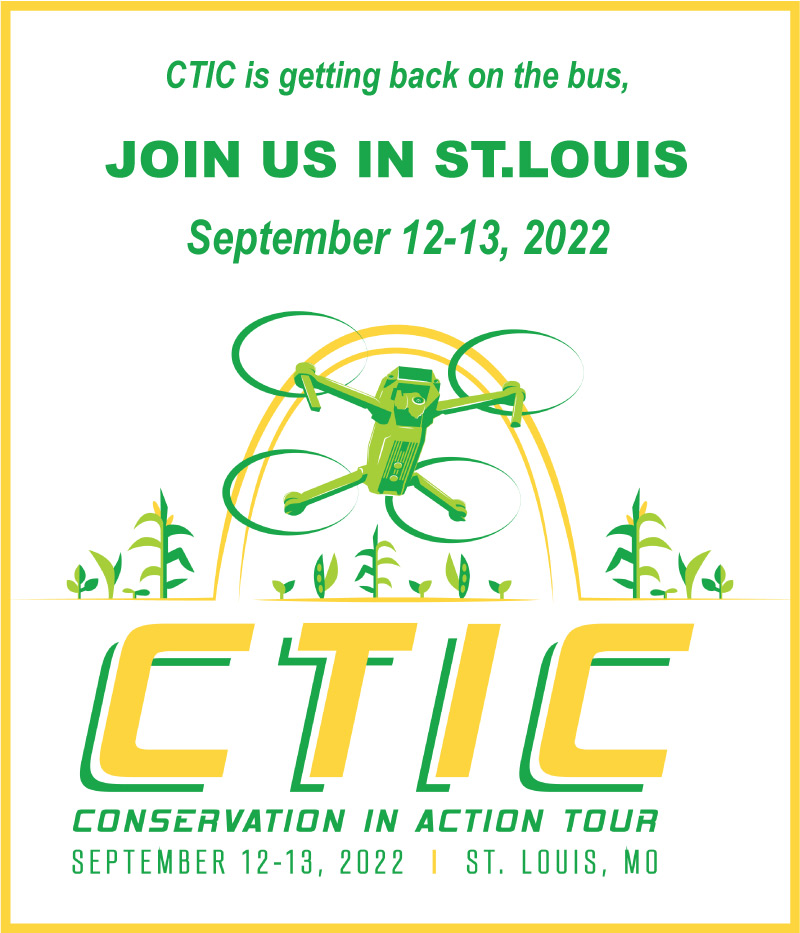Maumee and Sandusky Basins Water Quality Project Receives EPA Great Lakes Grant
For more information: Steve Werblow (steve@stevewerblow.com)
WEST LAFAYETTE, Indiana (February 24, 2020)—The Conservation Technology Information Center (CTIC), in partnership with Ecosystem Services Marketplace Consortium (ESMC), Heidelberg University in Ohio, and others, has been awarded a Great Lakes Restoration Initiative (GLRI) grant by the U.S. Environmental Protection Agency. EPA Region 5 Administrator Kurt Thiede announced today in a Chicago press event that the agency will fund the groups' three-year project—which uses satellite data, sophisticated models, farmer training programs, and direct incentives to create a market-driven reduction in phosphorus (P) runoff in the Ohio watersheds—with more than $472,000.
Mike Komp, CTIC's executive director, pointed out that the project will link not only extensive data collection, modeling, and on-the-ground action, but also link farmers with food companies and other players in the agricultural supply chain seeking to improve water quality.
“This grant will kick start an effort to link farmers who work to reduce nutrient loss with supply chain participants," said Komp. "Through this partnership with farmers, researchers, market makers, and nonprofits, we will create the ability to quantify and reward farmers for their reductions in phosphorus loss. With all the issues related to water quality in the Western Lake Erie Basin, we hope to drive improvements through this market-based effort.”
Cover Crop Connections
The project will encourage farmers in the Maumee and Sandusky river basins to reduce P loads by 40 percent using subsurface application, cover crops, and buffer strips. Through educational materials, workshops, and one-on-one training, CTIC, The Fertilizer Institute (TFI) and the Soil Health Partnership (SHP) will provide technical support to farmers on sustainable nutrient management practices.
Using the Operational Tillage Information System (OpTIS)—which analyzes publicly available satellite imagery to track tillage and cover crop adoption at the watershed scale—the field-level Nutrient Tracking Tool (NTT) and models and monitoring data from Heidelburg University, CTIC and its partners will create baselines for water quality trading programs and monitor adoption of the conservation practices. The Ecosystems Service Market Consortium (ESMC) will enable water quality trading for P credits, coordinate a pay-for-performance model, and link buyers seeking sustainably produced commodities with farmers who have adopted key conservation practices.
"This project is a great opportunity to pilot test ESMC's program in the Great Lakes," said Debbie Reed, Executive Director of ESMC. "We will work with our members from across the agricultural supply chain and with local experts to test the generation and sale of water quality credits from our outcomes-based program, and to reward farmers for their stewardship. ESMC's program focuses on agriculture as a solution to natural resource needs of society at local and regional levels, and this grant is our first opportunity to operate our program in the Great Lakes region."
The GLRI project launches will conclude on December 31, 2022.

